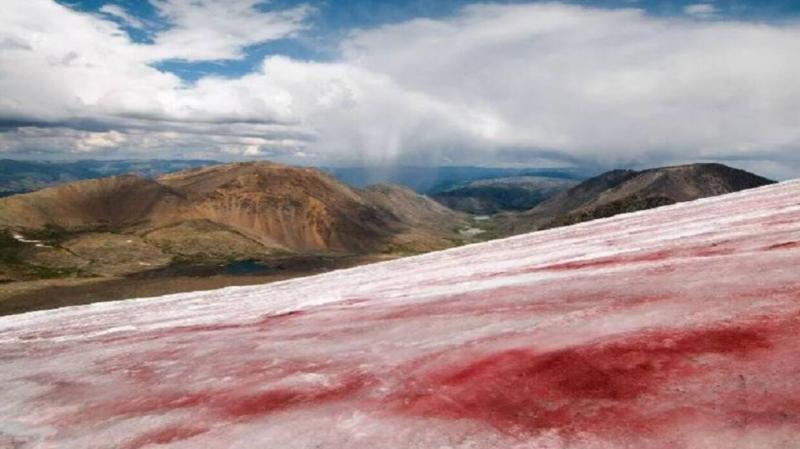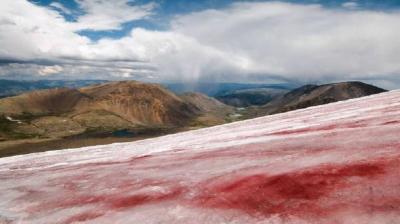Scientists from Tomsk State University in Russia have revealed the reason behind the blood-red coloration of glaciers in the Altai Mountains. In a statement issued by the university, it was noted: "During studies conducted by our scientists and students on the glaciers in the Altai Mountains, it was observed that Chlamydomonas nivalis algae have recently bloomed significantly in these glaciers, causing them to take on a pinkish-red hue."
The statement added: "During the expedition, scientists measured the light reflection rates from the surfaces of the glaciers and noticed that the algae bloom reduces reflectivity, which leads to increased rates of snow and ice melting."
For his part, Alexander Yuroviev, the head of the Glacial Climate Laboratory at the university's Faculty of Geology and Geography, said: "The aim of the expedition is to monitor the mass balance of the glaciers and conduct studies related to climate change and the effects of solar radiation in the Altai Mountain region. We conducted studies on the Left Aktru and Vodopadny glaciers, which are located at altitudes of 2600 and 3556 meters above sea level, respectively, and we observed that the rates of algae growth have increased significantly this year compared to last year."




